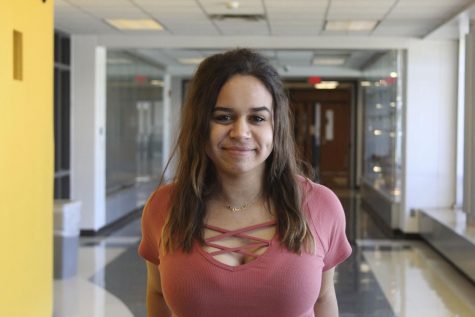The Advocate
More than 20 percent of American teenagers have a serious mental illness, according to LiveScience.com. This number increases when less severe mental illnesses are added into the statistic.
The growing mental health epidemic in this country has seemingly been accompanied by too much silence.
Nearly 70 percent of U.S. teenagers with a mental illness receive counseling.
Junior Kate Hollingsworth began going to therapy during her middle school years. Throughout the past couple years, she has continued treatment and said she plans to continue until she is completely recovered.
“I remember, I was ashamed to tell even my mom,” she said. “I had to pass her a note that literally said, ‘Can I see a therapist?’ She tried to talk to me, but I told her not to worry about it. It’s something a lot of families don’t talk about. Mental illness in any form is seen as being a failure or that you’re just not trying hard enough.”
After multiple suicide attempts and psychiatric stays, Hollingsworth decided to post her story on social media. She said she had reached a point where she could no longer hide that part of her life. She wanted to normalize treatment — beginning with sharing her experiences.
“Looking back, I was in a really bad place at the beginning of this year,” she said. “And through everything — my multiple therapists, my case manager, my psychologist and through Marillac — I think it’s made all the difference. If I never ended up reaching out for help, I probably wouldn’t be here today. That’s a scary reality, and it’s just another reason it’s so important to normalize therapy and seeking help.”
today. That’s a scary reality, and it’s just another reason it’s so important to normalize therapy and seeking help.”
Hollingsworth said the stigma surrounding mental illness and getting help is due to a lack of understanding and conversation.
“The root of people not asking for help is because no one talks about it,” she said. “That was the hardest part for me because I had never heard anyone talk about it — depression, anxiety or anything. People refuse [to discuss] it — it’s not there. A lot of people who haven’t gone through it think, ‘Just be positive. You’ll be fine — you’re doing great.’ That is so unhelpful.”
In Hollingsworth’s view, we need to create a community that fosters communication and help.
“Everyone has their issues — everyone has things going on,” she said. “Just having someone to talk to and having a support system around you is one of the most important things. If you’re just relying on yourself, and you’re in a really difficult situation — it’s really hard to get through it alone.”
Hollingsworth has been through extensive treatment, and though she has come far, she said she believes she has further to go.
“I woul dn’t say that right now I am fully recovered,” she said. “I would say that if 10 years from now I am able to see things from my past and hear about death or suicide, or see an object that I could hurt myself with, and not have a melt-down — when I can fully wake up and say that I am hopeful about my future, and I know that things will go well — that’s the point where I can say that I am recovered.”
dn’t say that right now I am fully recovered,” she said. “I would say that if 10 years from now I am able to see things from my past and hear about death or suicide, or see an object that I could hurt myself with, and not have a melt-down — when I can fully wake up and say that I am hopeful about my future, and I know that things will go well — that’s the point where I can say that I am recovered.”
According to LiveScience.com, half of all students who receive counseling for mental illness receive it from their school.
Psychologist Julie Seitter is an option for students who need someone to talk to.
“Mrs. Seitter is wonderful,” Hollingsworth said. “I’ve been seeing her for a long time. I see her every Thursday. I’ll just pop into her office, and we’ll talk for however long I need. She sees everything that goes on in the school, and she understands.”
Hollingsworth said she wants others to know that seeking help is an option. For her, finally receiving the help she needed assisted her on the road to recovery.
“I suffered alone because I didn’t know how to ask for help,” she said. “When people tried to help me, I refused it because I felt like no one would understand what I was going through. Seeking help and going to therapy changed my life. Hearing other people’s stories made me realize there are so many people that have had to go through what I am going through. There is a way out of the pain you are feeling, and there is help in so many places.”

Julie is the co-editor in chief of "The Tiger Print" and has been on staff for three years. She writes features, news and opinion stories and also takes...

Alli Williams is a co-editor in chief for “The Tiger Print.” She works as an assistant teacher at a math tutoring business. Her favorite part of journalism...






